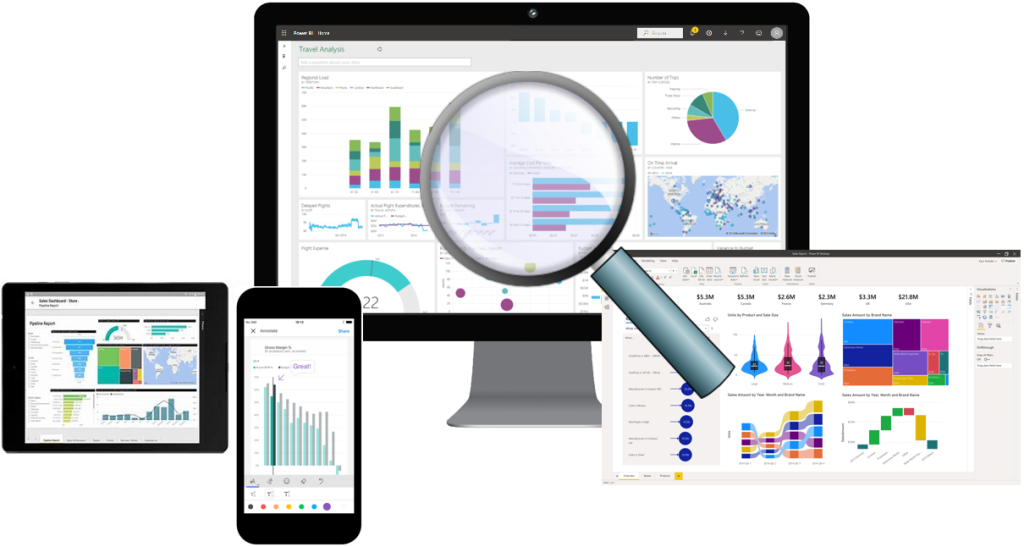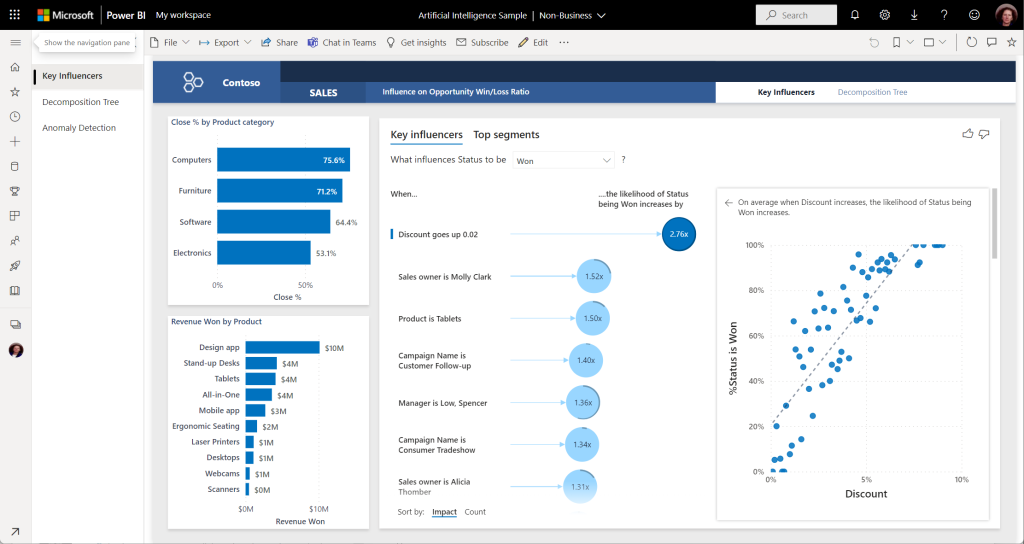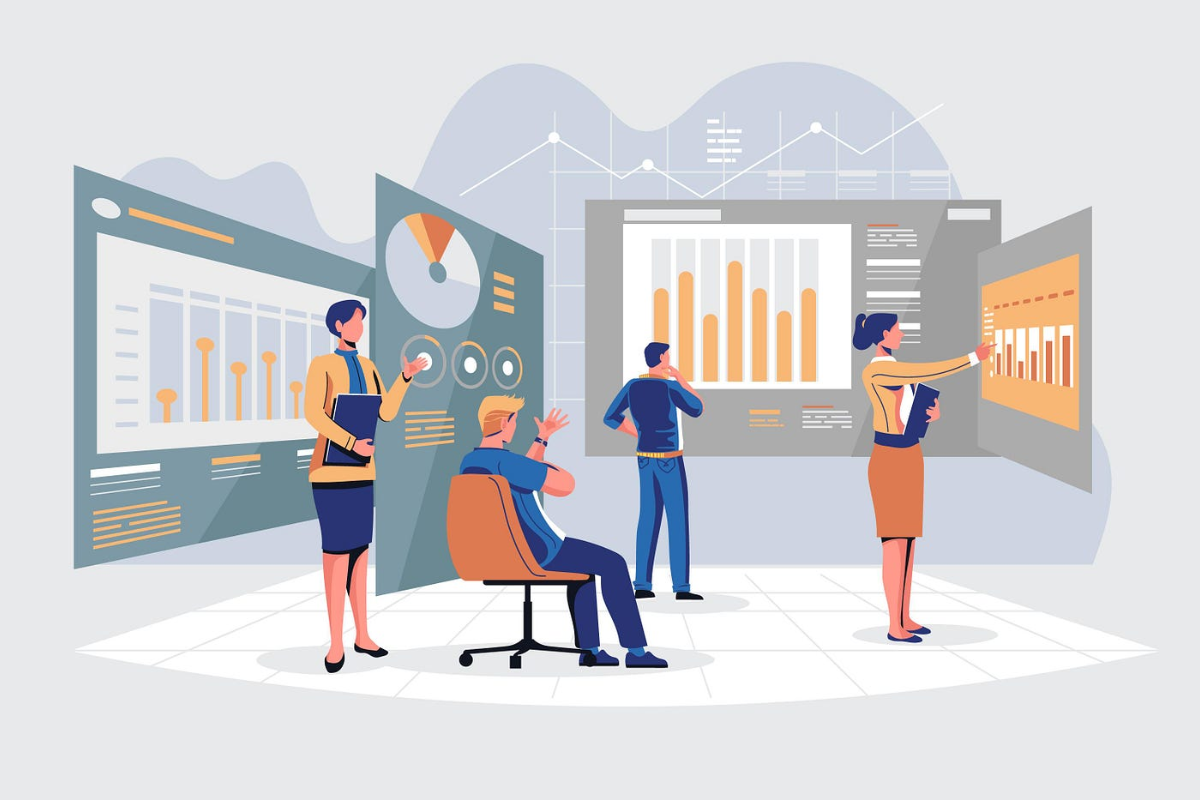Harnessing Data Stories For Better Business Decisions
Ever feel like you’re drowning in a sea of data, but still struggling to make sense of it all? You’re not alone! With the flood of information pouring into businesses every day, raw data alone can often leave us more puzzled than enlightened. That’s where data storytelling comes to the rescue. Think of it as the superhero of the data world, transforming complex numbers and charts into compelling narratives that speak directly to stakeholders.
Data storytelling is crucial for businesses today because it bridges the gap between data analysis and decision-making. By turning data into a story, businesses can uncover actionable insights that drive strategic decisions and make the data truly impactful. In a competitive market, the ability to quickly understand and act on data through effective storytelling is what sets successful businesses apart.
What is Data Storytelling?
Data storytelling is the practice of combining data, visuals, and narrative to convey insights in a way that is compelling and easy to understand. It goes beyond presenting numbers and charts by framing the data within a context that tells a story, making it more relatable and actionable.
Is it different from Data Reporting?
Traditional data reporting focuses on presenting raw data in a straightforward manner, such as through tables and charts. It emphasizes the “what”—the basic facts and figures—without exploring the reasons behind these numbers. While essential for tracking performance and monitoring KPIs, data reporting typically lacks depth in explaining the implications or causes of the data.
In contrast, data storytelling aims to uncover the “why” and “how” behind the data. It combines data with narrative and visuals to reveal trends, patterns, and correlations. This approach provides context and meaning, helping stakeholders understand the significance of the data and its broader implications, rather than just presenting isolated facts.
Data reporting informs, but data storytelling influences and drives action. By transforming data into a compelling narrative, data storytelling helps decision-makers grasp key insights and motivates them to take strategic actions. This method not only conveys information but also facilitates better decision-making and business growth.
Why Data Stories Matter in Business?
- Simplifying Complexity: Data can be complex and difficult to interpret, especially when dealing with large datasets. Data storytelling simplifies this complexity, making it easier for stakeholders to grasp the essential insights.
- Highlighting Key Insights: Not all data is equally important. Data storytelling helps identify and emphasize the most critical insights, ensuring that decision-makers focus on what truly matters.
- Driving Action: A good data story not only informs but also motivates action. By clearly illustrating the implications of the data, it helps businesses take the necessary steps to capitalize on opportunities or address challenges.
- Engaging Stakeholders: Data stories are more engaging than raw data or static reports. They capture the attention of stakeholders, making it more likely that they will understand and act on the information presented.
Microsoft Power BI
Microsoft Power BI is a business analytics tool that excels at transforming raw data into interactive visualizations and comprehensive reports. It’s a powerful platform for data storytelling, offering a range of features that make it easier to create, share, and act on data-driven stories.

Interactive Visualizations: Power BI creates dynamic visuals that make data trends, comparisons, and outliers easy to understand. Users can interact with and explore the data for deeper insights.
Customizable Dashboards: Users can design tailored dashboards focusing on key metrics and KPIs. These dashboards can be shared with stakeholders for collaborative decision-making.
Real-Time Data: Connect to various data sources for real-time updates, ensuring data stories reflect the latest trends and enabling timely decisions.
Seamless Integration: Integrates with Microsoft tools like Excel, Azure, and Teams, and supports third-party apps, allowing for enriched, multi-source data stories.


Collaborative Features: Easily share reports and dashboards with colleagues globally, promoting a data-driven culture and ensuring everyone has access to the same insights.
AI and Machine Learning: Power BI’s advanced analytics reveal hidden patterns and predictive insights, adding depth to data stories and helping forecast future trends.
Best Practices for Data Storytelling
Know Your Audience:
Understanding the audience is critical to effective data storytelling. Tailor the narrative to the needs, knowledge level, and interests of your audience to ensure that the story resonates with them.
Keep it Simple:
Avoid overloading the story with too much data. Focus on the most relevant information and present it in a clear and concise manner. Simplicity helps to maintain the audience’s attention and ensures that the key message is communicated effectively.
Use of Visuals:
Choosing the right visuals is essential for enhancing the narrative. Use charts, graphs, and other visual elements to highlight key points and make the data more engaging.
Conclusion
Data storytelling is a crucial element in modern business decision-making, offering a way to transform complex data into actionable insights. Unlike traditional data reporting, which simply presents raw figures, data storytelling provides context and meaning, making it easier to understand the underlying trends and patterns. By crafting a narrative around the data, businesses can not only inform but also inspire action, leading to more strategic and impactful decisions. Embracing data storytelling helps organizations bridge the gap between data and decision-making, ultimately driving success and fostering a deeper understanding of the business landscape. As you integrate data storytelling into your practices, you empower your team to make informed, data-driven decisions that can propel your business forward.








